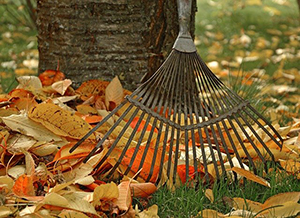The Wave Crew Wave Petunias | Cool Wave Pansies
It’s that time of year again! Cleaning up your garden and yard before Winter strikes. You might even have some time to do a little prep for Spring in the process.
Get composting. Composting old annuals and vegetables from your garden will help ensure the next growing season will be as successful as this year. Remember to only compost plants that are free of disease. Bacteria in diseased plants can fester over Winter in the soil and contaminate next year’s plants and should be bagged and removed. Otherwise, any leftover healthy plant material that has died after the frost can be safely composted.
Empty hanging baskets and containers. When it comes to hanging baskets and containers, it’s best to start with fresh soil each Spring. Remove the soil from these containers if you plan to reuse them, clean them with a light bleach solution and store them safely to prevent cracking.
Cleaning and storing tools. Other garden items and tools should also be given a good cleaning before storing them for the Winter. For gardening tools, brush off all dirt and debris and make sure the surfaces of the tools are dry before you store them. You can wipe them with a light coat of oil or spray surfaces with a penetrating oil. This helps to prevent any damage from rust while not being used. You can also put tools in a sand bucket to keep them clean and sharp. To do this, all you need is a bucket of sand and a small amount of motor oil. Mix in the oil until the sand changes color just slightly. Storing your metal tools in the sand mixture will keep them from rusting.
Perennial cutbacks. When cleaning up the garden, prioritize removing and discarding diseased top growth, but leave healthy seed heads standing. They provide a reliable food source for birds in the Winter months. However, all perennials left standing should be cut to the ground in the Spring before new growth starts.
To help you out, here’s a list of perennials to cut back in the Fall:
Bearded Iris
Bee Balm
Phlox
Lilies
Gaillardia
Catmint
Columbine
Daylily
Peony
Salvia
Solomon’s Seal
Yarrow
Hostas
Astilbe
Then there are perennials that you should wait to prune in the Spring. These are plants that need their foliage for protection over the Winter, such as:
Annual wildflowers (i.e., Cosmos, Zinnias or Sunflowers)
Echinacea
Rudbeckia
Sedum
Ornamental Grasses
Butterfly weed
Ferns
Heuchera
Woody plants (i.e, Lavender and Russian sage)

Image by Peggy Choucair from Pixabay
Leaves and raking. For most of us, we have to deal with leaves at some point. Although they may seem like a nuisance, they are also a valuable natural resource that can be used as mulch or compost. Composting leaves is a good way to recycle nutrients. If you’d rather mulch them in place, you can use your lawn mower. Mulching leaves into the lawn works well as long as it is done several times throughout the season. If not, the leaves can create a thick layer above the grass and simply raking them up would be a much easier task. You can also save the leaves to use as mulch and chip them into small pieces for your garden in the Spring.
And finally … Create a garden journal! It’s a good idea to record your garden’s layout; knowing what you planted this season and where will definitely help with the next growing season. Natural crop rotation helps control possible diseases and increases soil nutrition. And for sure, write down this year’s garden thoughts in a garden journal. What went well, what was a struggle, etc. You’ll find how helpful a journal is as you learn and grow into next year’s garden plan.